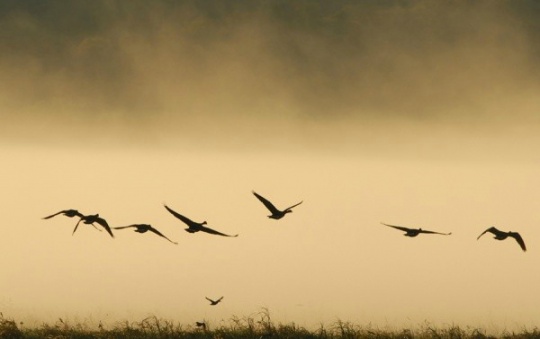
With lush greenery and plentiful freshwater, Jatinga, the headquarters of the Dima Hasao district, some eight kilometres from here, is a resting place for many migratory birds. Haflong is 350 km from Guwahati.
Birds that have been sighted here over the years include the kingfisher, Indian pitta, green breasted pitta, green pigeon, black drongo, racket tailed drongo, whistling ducks, spotted doves, emerald doves, and grey heron. But come September, and the locals brace for the ghastly sight.
Is it really suicide, or something else? "It is not a suicide, to be precise. But the fact remains that birds are attracted by light and fly towards any object with a light source. This phenomenon still puzzles bird specialists," said Anwaruddin Choudhury, a well-known ornithologist in Assam, on the sidelines of the First International Jatinga Festival.
The 'suicide', however, is just a part of the mystery. The more baffling question is why birds fly after sunset at all, as reserach shows that most birds are diurnal, that is, active only during the day.
The late Salim Ali, the country's pre-eminent ornithologist, too was struck by this oddity. "The most puzzling thing to me about this phenomenon is that so many species of diurnal resident birds should be on the move when, by definition, they should be fast asleep. The problem deserves a deeper scientific study from various angels," he had written.
Jatinga was originally inhabited by the Zeme Nagas, who came across the bird phenomenon while guarding their paddy fields on a moonless, dark night. Frightened, the Nagas sold the land to Jaintias and left the place way back in 1905.
Jaintias, the new inhabitants of Jatinga, also witnessed the phenomenon but interpreted it as a gift from the gods. "The phenomenon has generated tremendous interest in wildlife circles across the world and has made Jatinga world famous," Brahma said.
The earliest reference to this phenomenon was made by E.P. Gee, a British tea planter in his book "Wild Life of India" in 1957. The Zoological Survey of India had sent a team to visit the place in 1977. Later, leading ornithologists from Europe, the US and Japan too studied the mystery. However, no case of migratory birds plunging to their deaths has been recorded yet.
Some bird specialists attribute the phenomenon to the electro-magnetic forces of Jatinga, which is surrounded by geographical faultlines all round. But no conclusive evidence has emerged till now. The deaths, though perplexing, are not mourned. Locals are quick to trap the birds using bamboo sticks, which are then consumed with relish.
Those desiring a first-hand experience of the phenomenon can visit Haflong - with Silchar (110 km) and Guwahati (350 km) being the two nearest airports. If travelling by train, board a broad gauge train from Guwahati till Lumding, from where another meter-gauge train will take you to Haflong. The route from Lumding to Haflong passes through many tunnels and it is an exciting journey somewhat resembling the Kalka-Shimla track. By road, it takes around 10-11 hours as you have to negotiate bumpy roads.







0 comments:
Post a Comment